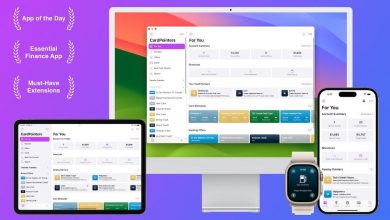Over Roth IRA Income Limits? 4 Ways You Can Still Contribute

The Roth IRA is one of the best investment vehicles available, which is one reason why they limit your contribution based on your modified adjusted gross income.
Normally, if you’re under the income limits, a single filer can contribute $7,000 for 2025 ($8,000 if you are age 50 and older). If you make more than $150,000 but less than $165,000, the contribution limit is decreased as you move up that income spectrum. If you make more than $165,000 – you are not permitted to contribute to a Roth IRA. (For married filing jointly, the income phaseout is $230,000 to $240,000)
But there are still ways for you to get money into a Roth IRA if you exceed the income limits.
😍 If you are looking for a Roth IRA, here are our favorite Roth IRA brokerages.
Table of Contents
Roth 401(k)
While not technically a Roth IRA, it still benefits from the tax treatment of a Roth IRA but in 401(k) form. If your employer offers it, it’s a great way to essentially get a supercharged Roth IRA because there are no income limits and the contribution limit is $23,500 in after-tax funds. Those ages 50 and up can contribute an extra $7,500 while those ages 60-63 can contribute up to $11,250 more.
This limit is shared with your traditional 401(k) so make sure you plan for this accordingly.
Roth Conversion
A Roth conversion is when you convert a tax-deferred account, like a traditional IRA, into a Roth IRA. You can convert all of it or just part of it and you’ll owe income tax on the amount you convert. This includes your original contributions plus any appreciation or dividends that have accrued. If you contributed after-tax dollars to a traditional IRA, those will not be taxed on conversion.
If you convert a mixture of pre-tax and post-tax dollars, the pro rata rule says you pay taxes based on the percentage of pre-tax and post-tax dollars in all of your IRA accounts. You can’t “pick” to convert just the post-tax dollars.
Another thing to remember is that the conversion has its own five-year holding period (for the purposes of calculating penalties if you withdraw the funds before 59.5) that starts on January 1st of the year you make the conversion.
🤔 Remember, when you withdraw funds from a Roth IRA, the IRS assumes you’re taking out contributions first, then conversions (in order of oldest to youngest), then earnings.
Backdoor Roth Conversion
A backdoor Roth conversion is a special name for a Roth conversion where you contributed dollars into a traditional IRA but never took the tax deduction, thus making them after-tax contributions. It’s titled backdoor because other than a few extra logistical steps, you’ve essentially contributed into a Roth IRA.
You can convert the Traditional IRA into a Roth IRA at any time but if you invest your funds while in the Traditional IRA, any gains are subject to income taxes.
OK so why the extra name? Because there’s a bit of IRS ambiguity here.
There is what’s known as a “step-transaction rule,” where the IRS can treat a series of transactions as a single transaction. It’s pretty obvious that the multiple steps you’re taking is to get around the income limits of a Roth IRA. So far, the IRS hasn’t provided guidance on this and so speak with a tax professional to fully understand your risks.
Also, remember the pro rata rule above? If you have Traditional IRAs with pre-tax money, you’ll have to pay income taxes even if you convert another Traditional IRA that consists solely for post-tax contributions.
Mega-backdoor Roth Conversion
Mega!
It’s called Mega-backdoor because it’s like the Roth Conversion above except it relies on your employer and your 401(k) – which provides a much higher MEGA limit (it’s $70,000 for 2025). 😂
The basic gist is that you make after-tax contributions to your 401(k) or similar plan and then convert that into a Roth IRA or Roth 401(k). Pre-tax contributions limit you to $23,500 per year but if your employer allows after-tax, that increases the limit to $70,000.
This, of course, means your employer must allow after-tax contributions into a 401(k). If they don’t, sorry, you’re out of luck for a mega-backdoor. This is different than an after-tax contribution to a Roth 401(k) as it’s subject to the $23,500 limit – though that’s still pretty good.
Next, you have to find out whether they will allow you:
- rollover funds into a Roth IRA while you’re still working there
- perform an in-plan rollover into a Roth 401(k)
If so, you can do the mega-backdoor.
- Max out your pre-tax contributions to get the employer match
- Contribute after-tax dollars up to the $70,000 limit
- Convert into a Roth as you would other conversions – in-plan into a Roth 401(k) is simplest but if you can’t do that, transfer the pre-tax money out to a Traditional IRA and the post-tax money out to a Roth IRA
Consult a Tax Professional
Everyone’s tax situation is different and there are many moving parts to this type of decision, so I recommend speaking with a tax professional to find out what the best move is for you.
The purpose of this article is to help you understand the options if you earn more than the income limits and still want to take advantange of a Roth IR.
Other Posts You May Enjoy:
How my thinking about money has changed over 20 years (and what hasn’t)
As I pass through my mid-forties, my approach to money is much different than what it was in my twenties. Here’s how it’s evolved and why I think that’s a good thing.
The Monthly Money Trap: How An “Affordable” Payment Isn’t
Marketers are savvy and know they can convince you something is affordable if they make the monthly payment palatable. Here’s how to avoid the monthly money trap and how you should be thinking about your major purchases.
What is Credit Card Piggybacking?
Credit card piggybacking can be an effective way to help someone with little or no credit history establish one. It can also help improve your credit score in some cases.
Retirement Savings Waterfall: In What Order to Make Your Savings Contributions
Saving for retirement can be challenging because there are so many different types of accounts with tax benefits (and drawbacks), here’s a simple ordered list that can help you decide where to contribute next.

About Jim Wang
Jim Wang is a forty-something father of four who is a frequent contributor to Forbes and Vanguard’s Blog. He has also been fortunate to have appeared in the New York Times, Baltimore Sun, Entrepreneur, and Marketplace Money.
Jim has a B.S. in Computer Science and Economics from Carnegie Mellon University, an M.S. in Information Technology – Software Engineering from Carnegie Mellon University, as well as a Masters in Business Administration from Johns Hopkins University. His approach to personal finance is that of an engineer, breaking down complex subjects into bite-sized easily understood concepts that you can use in your daily life.
One of his favorite tools (here’s my treasure chest of tools, everything I use) is Empower Personal Dashboard, which enables him to manage his finances in just 15-minutes each month. They also offer financial planning, such as a Retirement Planning Tool that can tell you if you’re on track to retire when you want. It’s free.
Opinions expressed here are the author’s alone, not those of any bank or financial institution. This content has not been reviewed, approved or otherwise endorsed by any of these entities.




